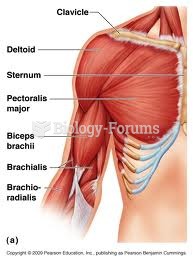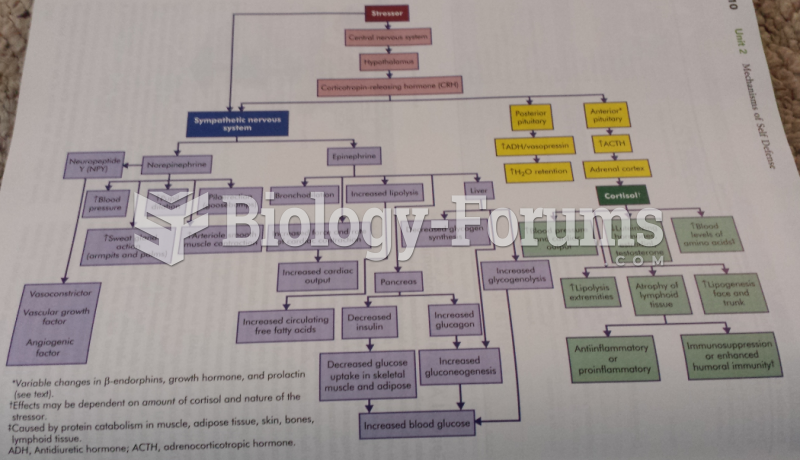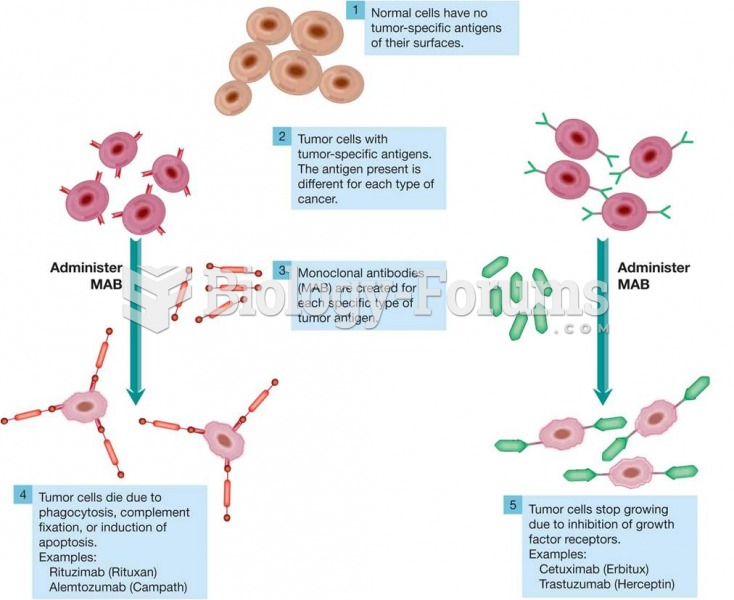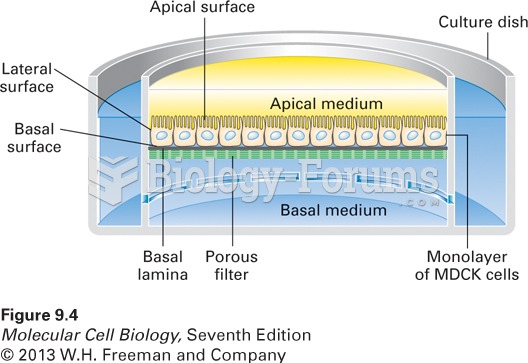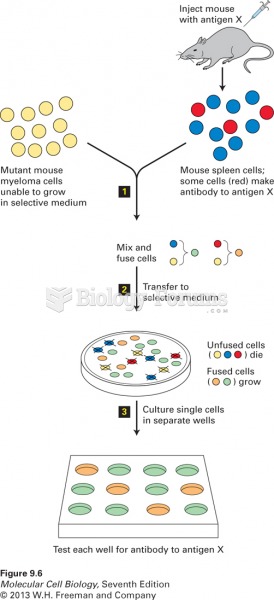|
|
|
Nearly 31 million adults in America have a total cholesterol level that is more than 240 mg per dL.
Asthma cases in Americans are about 75% higher today than they were in 1980.
Bacteria have flourished on the earth for over three billion years. They were the first life forms on the planet.
Vital signs (blood pressure, temperature, pulse rate, respiration rate) should be taken before any drug administration. Patients should be informed not to use tobacco or caffeine at least 30 minutes before their appointment.
IgA antibodies protect body surfaces exposed to outside foreign substances. IgG antibodies are found in all body fluids. IgM antibodies are the first type of antibody made in response to an infection. IgE antibody levels are often high in people with allergies. IgD antibodies are found in tissues lining the abdomen and chest.



